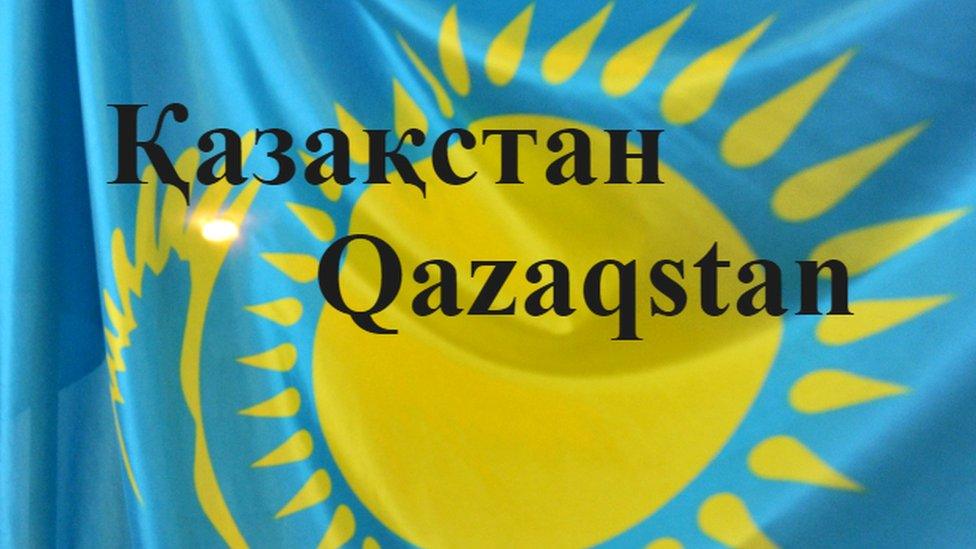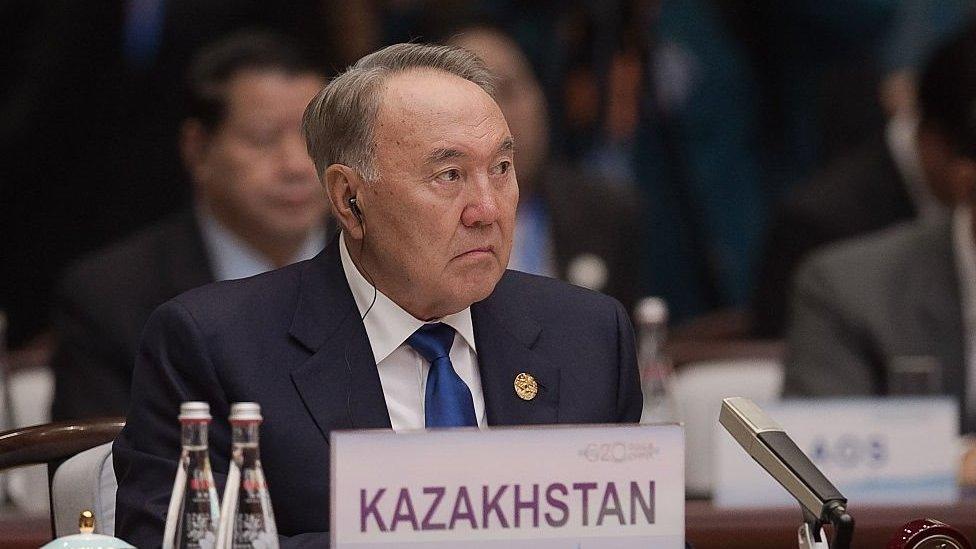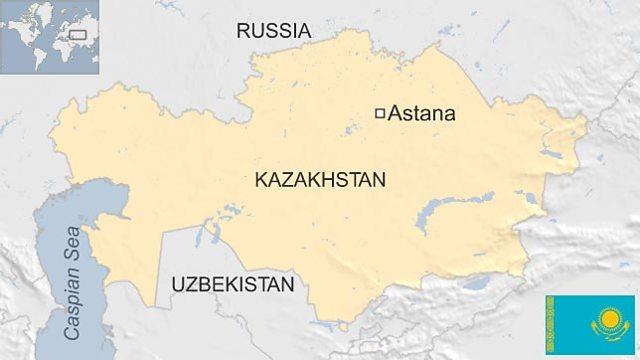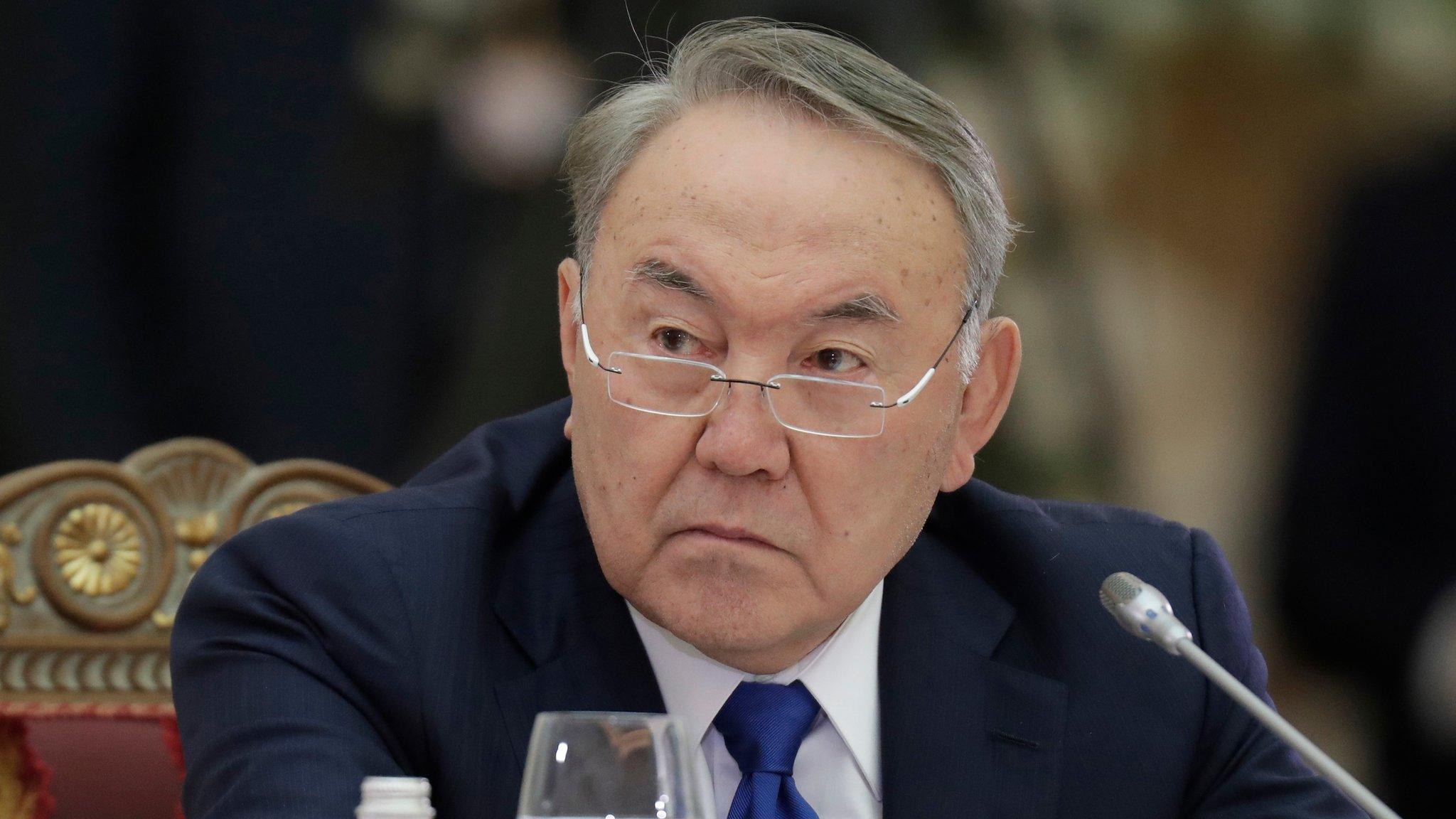Kazakhstan to Qazaqstan: Why would a country switch its alphabet?
- Published

The Kazakh language has long been unsure which alphabet to find a comfortable home in and it's now in for another transition - but this is not without controversy.
Last Friday Kazakh President Nursultan Nazarbayev finally decreed that the language would shed its heavy Cyrillic coat and don what he hopes to be a more fashionable attire: the Latin alphabet.
Is this going to be easy?
No. The Latin alphabet has far fewer letters: There will need to be creative combinations with apostrophes to catch all the sounds needed for the Kazakh language.
Kazakhstan is in an unusual position: None of the alphabets that exist seem like a perfect fit or have a long enough tradition to be the uncontested host for its language.
Kazakh is a Turk-based language and its history is political: Originally it was written in Arabic. Enter the Soviet Union who in 1929 did away with Arabic and introduced Latin - only to 11 years later shift to the Cyrillic alphabet to have the republic more in line with the rest of the USSR.
The Kazakh version of Cyrillic has 33 Russian letters and nine Kazakh ones, while the Latin script only has 26.
The big changeover is to be official by 2025.
Confused by all this talk about letters and characters? Before you get lost in translation, here are a few spellings of the country's name just to give you an idea:

So why change?
President Nursultan Nazarbayev has given a lengthy explanation, external: There are many reasons like of modernising Kazakhstan, but also determined by "specific political reasons".
Political pundits see it as step to weaken the historical ties to Russia: Shedding not only the Russian alphabet, the thinking goes, but also the influence Moscow still likes to exert over its post-Soviet backyard in central Asia.

President Nazarbayev's might soon need a new sign for that table
There are also more immediate practical reasons: The hope is that Latin letters will make it easier to push for modernisation in a global and digital world.
Of the other four Former Soviet Republics in Central Asia, Kyrgyzstan and Tajikistan still use Cyrillic while Uzbekistan and Turkmenistan are using the Latin alphabet.
Will it be a smooth transition?
This discussion is not new: The change to the Latin alphabet has been mooted several times since the country's independence after the end of the Soviet Union, but so far has failed to garner widespread support.
Because: If even the name of the country would change from Kazakhstan to Qazaqstan, just imagine the potential for confusion in people's daily lives?
Let's look at the innocent carrot for an example: The Kazakh word for carrot is "сәбіз" and would traditionally be spelled "sabeez" in Latin. In new Latin alphabet though, it will end up as "sa'biz".

Facebook users have adopted the carrot example to express their views on the change
This, again, is awfully close to the Latin spelling of an extremely rude Russian swear word.
Not all the mix-ups are as delicate as this one: But there's ample discussion online of people confused and amused by how they now should write their own names and whether the change will work out well nor not.
While some see it as a right step out of the shadows of the Soviet past and of present Russian influence, others warn it's a politically motivated move which will disconnect future generations from the country's written past century.
So what is next?
By the end of the year there will a finalised official Latin spelling. By next year teacher training is to begin and new textbooks will be developed.
Come 2025, all official paperwork and publications in the Kazakh language will be in the new Latin script. President Nazarbayev indicated though there would be a transition period where Cyrillic might still be used as well.
Given that Russian is the country's second official language, signs and official documents will though remain bilingual: in the Kazakh with Latin letters and in Russian with the Cyrillic alphabet.
Reporting by Andreas Illmer, Elbek Daniyarov, Azim Rakhimov and BBC Monitoring.
BBC Monitoring, external reports and analyses news from TV, radio, web and print media around the world. You can follow BBC Monitoring on Twitter, external and Facebook, external.
- Published5 July 2017

- Published24 March 2023

- Published6 March 2017
